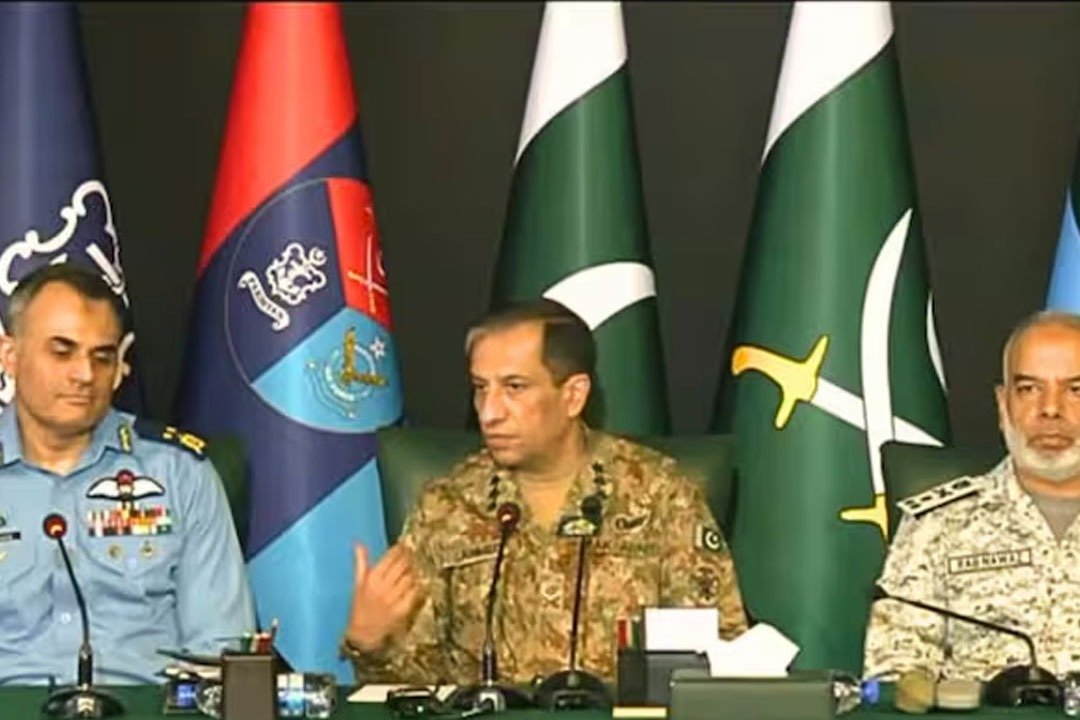RAWALPINDI, Pakistan — The Pakistan Army’s General Headquarters (GHQ) in Rawalpindi has long been the nerve center of the nation’s military might, a fortress of strategic planning and political influence tucked into a crowded urban sprawl just 10 kilometers from Islamabad. For decades, its proximity to the capital symbolized the military’s grip on Pakistan’s destiny. But now, rattled by India’s Operation Sindoor—a series of drone and missile strikes in May 2025 that exposed Rawalpindi’s vulnerabilities—the army is seriously considering relocating its headquarters to Islamabad, where the presence of foreign embassies could serve as a shield against future attacks.
The catalyst for this seismic shift was the May 10, 2025, Indian operation, launched in retaliation for a terrorist attack in Jammu and Kashmir’s Pahalgam on April 22. Indian drones and precision-guided munitions struck multiple Pakistani military sites, including the Nur Khan Airbase, adjacent to the GHQ in Rawalpindi. The attack, which damaged critical infrastructure and disrupted air force communications, laid bare the strategic peril of the GHQ’s location. Situated in a flat, densely populated city with minimal natural defenses, Rawalpindi offers little protection against modern warfare tactics like low-altitude drone incursions or long-range missiles, both of which India deployed with chilling efficacy.
Islamabad, by contrast, presents a compelling strategic advantage: its diplomatic enclave, home to dozens of foreign embassies, including those of the United States, China, and the United Kingdom. The presence of these missions, concentrated in a secure sector of the capital, could deter India from launching strikes due to the risk of collateral damage and the international fallout that would follow. An attack on Islamabad’s military facilities, even if precisely targeted, could inadvertently hit diplomatic assets, triggering condemnation and potential escalation from global powers. This unspoken shield, analysts suggest, is a driving factor in the army’s calculations, though publicly the move is framed as a logistical upgrade to enhance coordination among the army, navy, and air force.
ALSO READ: Attention Startups! Showcase Your Smart Policing Solutions on India’s Biggest Stage
The vulnerabilities exposed by Operation Sindoor were stark. Nur Khan Airbase, critical for VIP transport and military logistics, lies within a 15-mile radius of the GHQ, the prime minister’s office, and units tied to Pakistan’s nuclear arsenal, creating a cluster of high-value targets. India’s strikes, which reportedly evaded Pakistan’s air defenses through stealth or low-altitude flight paths, underscored Rawalpindi’s lack of geographic cover. The attack’s psychological toll was equally significant, with unverified reports circulating on platforms like X claiming that army chief General Asim Munir was forced to take shelter in a bunker during the assault. A widely shared post by a prominent X user, known for sharp security commentary, framed the relocation as an admission that Rawalpindi leaves the army “exposed, like sitting ducks,” amplifying public speculation about the move’s true motives.
While plans to shift the GHQ to Islamabad have existed since 2017, with land reportedly allocated for a new military complex, the urgency following May’s strikes has brought the proposal to the forefront. Islamabad offers not only the diplomatic enclave’s deterrent effect but also a more controlled urban environment, potentially better suited for deploying advanced air defense systems like the Chinese-supplied HQ-9 and LY-80. The capital’s distance from the Line of Control (LoC), though marginal, adds a layer of buffer against cross-border threats, unlike Rawalpindi’s proximity to contested regions.
The evolving nature of South Asian warfare further complicates Pakistan’s position. India’s use of domestically developed drones and precision munitions in Operation Sindoor showcased a technological edge that caught Pakistan’s defenses off guard. The destruction of airbases, including Nur Khan, Rafiqui, and Murid, highlighted India’s ability to strike deep into Pakistani territory. Indian officials, in post-strike briefings, emphasized that no part of Pakistan would be beyond their reach, a pointed warning that relocation alone may not guarantee safety. Yet, the diplomatic sensitivities of Islamabad could force India to hesitate, weighing the geopolitical cost of a miscalculated strike.
Symbolically, moving the GHQ to the seat of civilian power carries risks. Rawalpindi’s headquarters is more than a military hub; it is a monument to the army’s outsized role in Pakistan’s governance, having shaped political outcomes and orchestrated coups. Relocating to Islamabad could blur the lines between military and civilian authority, especially in a nation where democratic institutions remain fragile. The 2023 arrest of former Prime Minister Imran Khan, which sparked riots, lingers as a reminder of the military’s fraught relationship with civilian leadership. While the army enjoys a post-ceasefire surge in nationalist support, the relocation could be seen as a power consolidation move, raising questions about its long-term intentions.
The financial and logistical hurdles are formidable. Constructing a new headquarters in Islamabad would demand significant resources at a time when Pakistan’s economy is strained, and the military’s budget is stretched across modernization and border security. Replicating the GHQ’s secure communication networks and command infrastructure could take years, and the move risks projecting weakness to domestic and international audiences—a perception the army is eager to avoid. Still, the memory of May’s strikes, coupled with the strategic allure of Islamabad’s diplomatic enclave, appears to outweigh these concerns.
The ceasefire brokered on May 10, 2025, with U.S. mediation has restored an uneasy calm along the LoC, but drone sightings and mutual accusations of violations keep tensions simmering. The army’s potential relocation, if confirmed, would mark a rare acknowledgment of vulnerability from an institution that thrives on projecting strength. Whether Islamabad’s diplomatic shield can protect the GHQ from India’s reach remains uncertain, but the specter of Operation Sindoor has forced a reckoning with Rawalpindi’s exposed position.
Public discourse on X, fueled by voices like the one highlighting the army’s bunker-bound leadership, reflects a broader anxiety about Pakistan’s strategic future. In a region defined by nuclear rivalry and technological shifts, the army’s decision to relocate its heartland will ripple far beyond Rawalpindi’s crowded streets, reshaping the contours of a volatile standoff.


